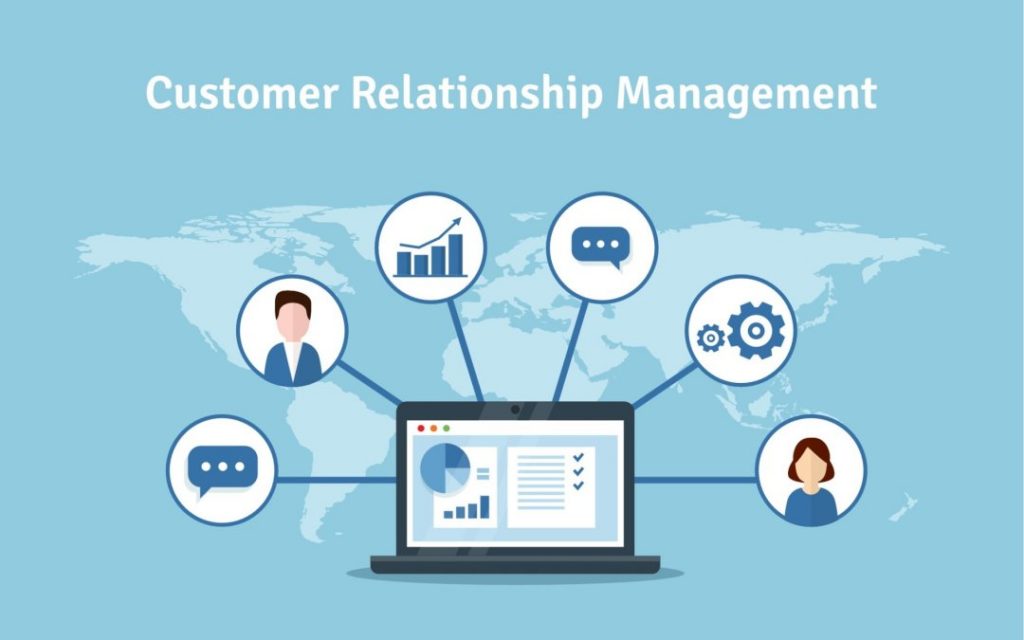When everybody has their heads down in the day-to-day, it’s easy to miss the forest for the trees.
You know what your “trees” are: social media posting, pushing out ads, publishing alumni articles, and a hundred other tasks that maintain a steady flow of internal and external communication.
But the “forest?” To the enrollment marketer, it’s the prospective student experience. Once you start looking at everything through that lens, you may start to see where you need help.
What Are Digital Marketing Services?
Digital marketing has changed so profoundly in the last 25 years, it’s a stretch to even use the same word to describe what we were doing in the early days.
Just because we were putting banner ads up on this new thing called the Internet instead of a billboard didn’t make the experience much different. Yes, you could click on it. But it was still basically an interruptive model, all about catching the eye, hoping for an impression.
Today, the digital landscape has become far more complex. The model is completely different.
The internet is no longer just another platform through which to advertise. It has evolved into a medium through which businesses and customers, schools and prospects, interact.
That interaction is the prospective student experience. These days, it’s the whole forest.
Signs You’re Missing the Mark on Digital Marketing
If several signs point to a fundamental misuse of digital marketing – as just another advertising medium and little more than that – you may need to bring in outside digital marketing services.
Here are six signs of trouble I’ve seen a lot.
1. YOU CAN’T CONNECT DOTS BETWEEN DIGITAL MARKETING AND ENROLLMENT.
I’ve worked with many schools that reach out for one simple, straightforward reason.
They know digital marketing is critical. But they can’t really prove it.
What I mean is, your school may have been adding digital marketing to your overall strategy for years. You just don’t have systems set up to track prospects through the pipeline to enrollment.
That means digital hasn’t provided any more proof of success than traditional marketing strategies have. Which in turn means there may be reservations about investing in more digital.
The Solution
Digital marketing services are often more versatile than traditional ones. You don’t need to restructure your budget and hire a big marketing agency of record just to help you prove digital ROI.
With a little consulting on engagement tactics and perhaps some new tracking tools, you can show that digital is driving enrollment and justify further investment.
2. YOUR SOCIAL MEDIA PRESENCE ISN’T MONITORED OR MEASURED.
I have two questions for you about your current social media practices:
- Can you point to a master content calendar that says what posts are going out and when?
- Have you set goals for how well you want those posts to perform?
What I find is that the answer to the first question is sometimes “no,” which means there isn’t really a social media strategy in place. You have a presence, but no one is monitoring it.
A “no” in response to the second question is far more common. Goal-setting often isn’t part of social media strategy, which means there is no data to justify the time and cost.
The Solution
This is a key area where digital marketing services can help you. Often, all you really need is help with getting on a more strategic footing, developing realistic procedures and metrics.
Sometimes, the need might be greater. You may need someone to actually produce content to be shared or promoted via social media. Consider this option if you believe your content today isn’t doing enough to create a positive, interactive experience for your prospects.
3. YOU WOULDN’T RECOMMEND USING YOUR OWN WEBSITE TO LEARN ABOUT YOUR SCHOOL.
Let’s be honest. This one hurts to say out loud, but somebody has to!
Have your admissions professionals ever said to prospective students or parents, while handing them an information packet, “This info is on our website as well, but …”
What comes next is a euphemism for what they’re really thinking.
- “But it’s really dry and academic.”
- “But good luck trying to bring it up on your phone.”
- “But I’m afraid you’ll get lost before you can apply … and frankly, don’t try. Just call me.”
That might work fine for that one interaction, but just think how many prospects who haven’t connected with an admissions counselor are turned off by your school’s website.
The Solution
First, I’ll tell you what the solution isn’t. Pointing out basic functionality, arguing that the website works “well enough,” and assuming that website redevelopment would be too costly doesn’t address the problem of a poor user experience.
It’s not just a good idea to consult with digital marketing services about redeveloping your website. It’s imperative.
Your website is the center of gravity for your entire digital marketing universe. Make sure it’s an optimal tool for prospects to easily find answers.
4. YOU’RE UNINSPIRED BY WHAT YOU SEE ABOUT YOUR SCHOOL IN DIGITAL MEDIA.
This one is closely related to #2 above because it touches on social media. But this one is less about metrics and goal-setting, more about content fundamentals.
What I’m talking about here is storytelling.
If you check your school’s social media feeds and wonder if any prospective student would really care, you have a problem.
It’s an understandable one. Prospective students aren’t your only audience – posts touting your school’s accomplishments backed by statistics, for example, may impress alumni, administrators, government partners, etc.
But prospects are your most important audience. And the best way to impress them is with stories they can see themselves in.
The Solution
With the right digital marketing services partner, you get the support you need to tell more stories, tell them better, and reach more prospects with them. This is the heart of your education brand. It’s always worth it to invest in storytelling.
A few examples of support include help with digital publishing platforms, storytelling through new channels like video and podcasts, and promotion through automated email lists.
5. EMAILS ARE SO IMPERSONAL, YOU’RE AFRAID THEY’RE ACTUALLY TURNING PROSPECTS AWAY.
This one is increasingly on my radar because it’s becoming a very common concern.
As your school has invested more time and energy in digital marketing (while trying to reduce the print marketing budget), you probably do a lot of email marketing these days.
But while the volume of emails you send out – often to large purchased contact lists – has increased, the personal touch is lost.
Meanwhile, companies in other industries have gotten better at email personalization at scale. Brands use tricks to make the recipient feel personally seen, like automatically:
- Inserting the recipient’s name
- Segmenting their audience by gender
- Emails triggered by a specific action (e.g. “You started filling out this form …”)
- Inserting other details recorded and stored (e.g. “Your first visit was on …”)
Before you balk at the word “tricks,” there is nothing nefarious about this practice. Using chatbots and other AI tools to warm up the interaction prior to human engagement has become the norm. Prospects appreciate it, even when they know it’s machine-assisted.
How are they doing this, you ask? Is it only possible with a giant budget?
Actually, meeting this bar for email personalization is more achievable than you might think.
The Solution
Digital marketing tools have become sophisticated enough to segment and automatically personalize big email lists, with far less work required than if you tried to do this manually.
The challenge is in putting together the logic (if they do this, we want to do that) and developing the content to get it off the ground. This is where digital marketing services can help.
6. YOU HAVE A BLOG, BUT NOBODY IS FEEDING IT.
Speaking of content development …
Many schools will start a blog (or blogs) with great expectations. They imagine a dynamic space with news about the school, student stories, alumni stories, advice for prospective students, etc.
In practice, the effort falls by the wayside.
Why? Two reasons. The first is that blogging takes work. Many marketing/admissions teams just don’t have the staff to keep up with it.
The second is unrealistic expectations for performance. Blogging, and content marketing in general, is a long-term strategy. A blog post doesn’t work like a Google ad or boosted Facebook post. It won’t deliver a ton of traffic overnight. When it doesn’t, attention turns to other priorities.
It’s important to stick with it. Your blog is part of an overall inbound lead generation strategy that can really pay off in the long term.
- Consistent blogging increases your search engine rankings for relevant keywords.
- In time, more and more seekers of general information about higher ed find you.
- Visitors who are already interested in the content are more likely to take another step.
- That step could be to sign up for an email list, visit, request info, or even apply.
It’s a key component of relationship building, communicating to potential prospects that you care about them, that you want to be helpful and answer their questions, even before they’ve taken any step toward applying to your school. That’s powerful. And it’s work worth doing.
The Solution
Keeping up with content development is one of the most creatively rewarding, but also among the most difficult, parts of any enrollment marketer’s job. Thankfully, the right digital marketing services partner can help a lot in this area.
That partner can solve your blog problem and more by creating a content strategy, building out a development calendar, assigning editorial roles, publishing, promoting and even producing content.
Read more here…






